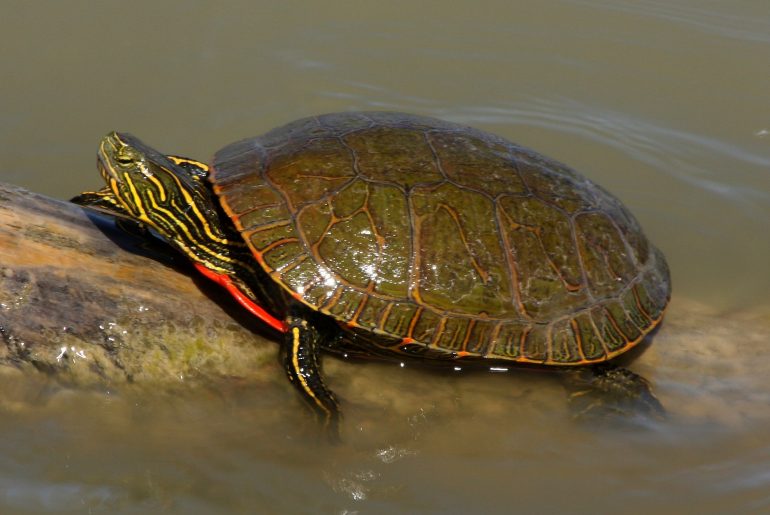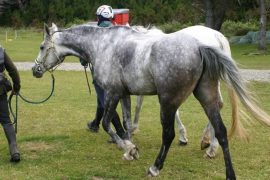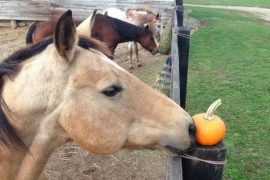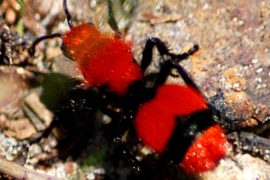Yellow-eared sliders have some sort of yellow stripes on their faces. Practically. Unfortunately, almost all common aquatic turtles have yellow stripes on their faces. Distinguishing the different species of aquatic turtles is not that easy. That’s why I want to give you a few tips on how to recognize the most common sea turtles.
Yellow-eared Sliders (Trachemys scripta scripta)
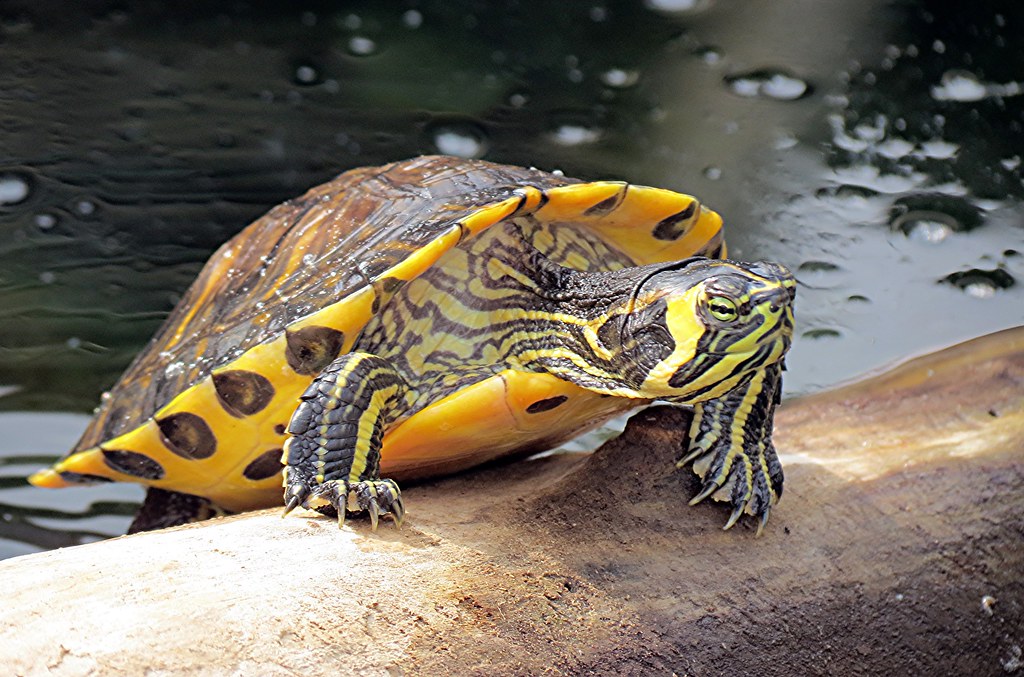
The Yellow-eared Slider (Trachemys scripta scripta) has a wide vertical stripe behind the eye. Yellow-cheeked slider turtles occasionally have spots on their belly shells when they are young, but these disappear as they grow. As a rule, adult yellow-cheeked slider turtles only have two spots left on the abdominal shell at the front of the neck. Therefore, this species is sometimes referred to in German as the yellow-bellied slider turtle.
Red-eared Sliders (Trachemys scripta elegans)
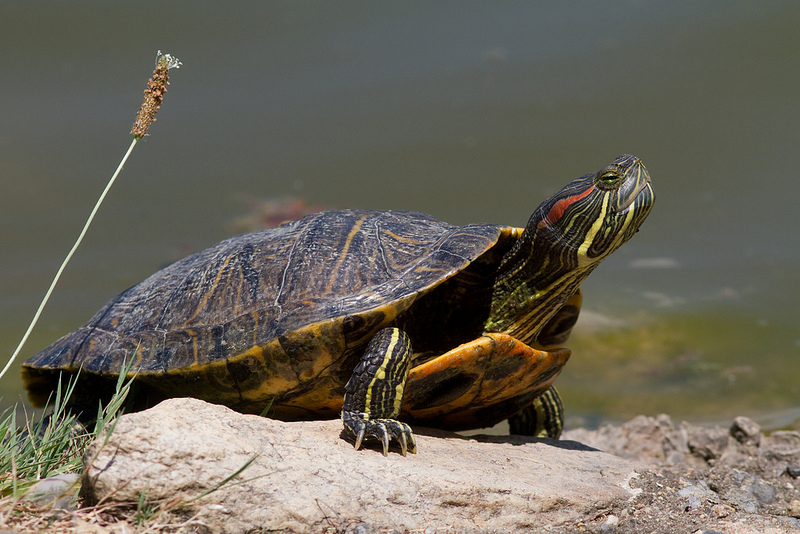
The red-eared slider turtle (Trachemys scripta elegans) has a long, horizontal bright red stripe behind the eye.
Cumberland Sliders (Trachemys scripta troostii)
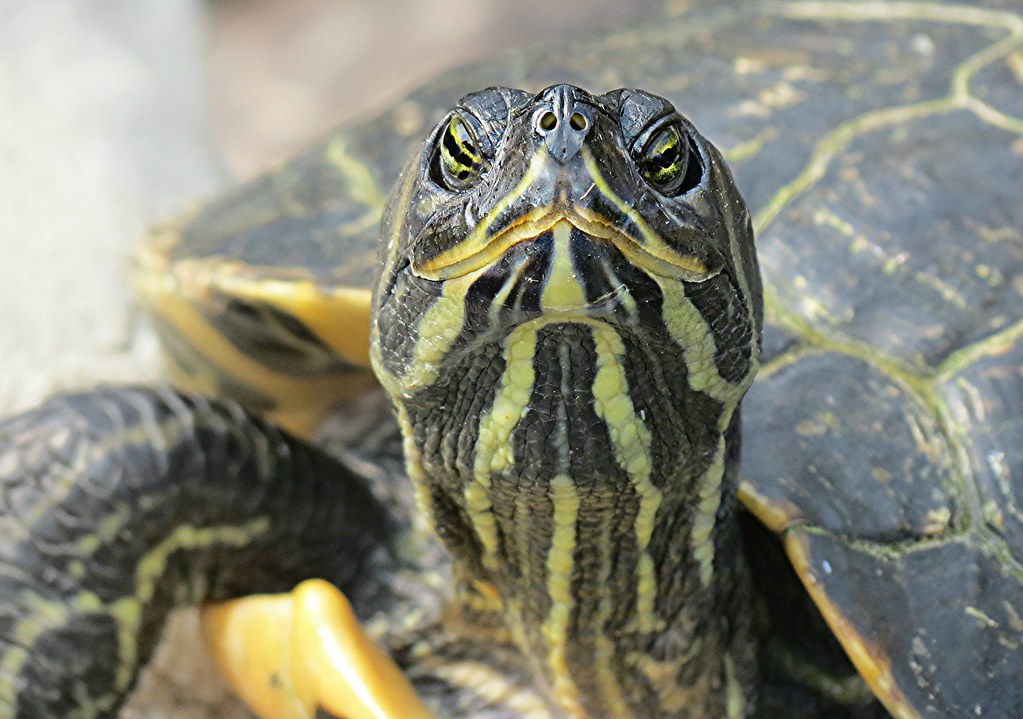
The Cumberland slider turtle (Trachemys scripta troostii) can easily be confused with the red-eared turtle. The Cumberland slider turtle also has a horizontal stripe behind the eye, but this is not red, but rather orange, with age it usually turns brownish.
Hieroglyphic slider turtles (Pseudemys concinna concinna)
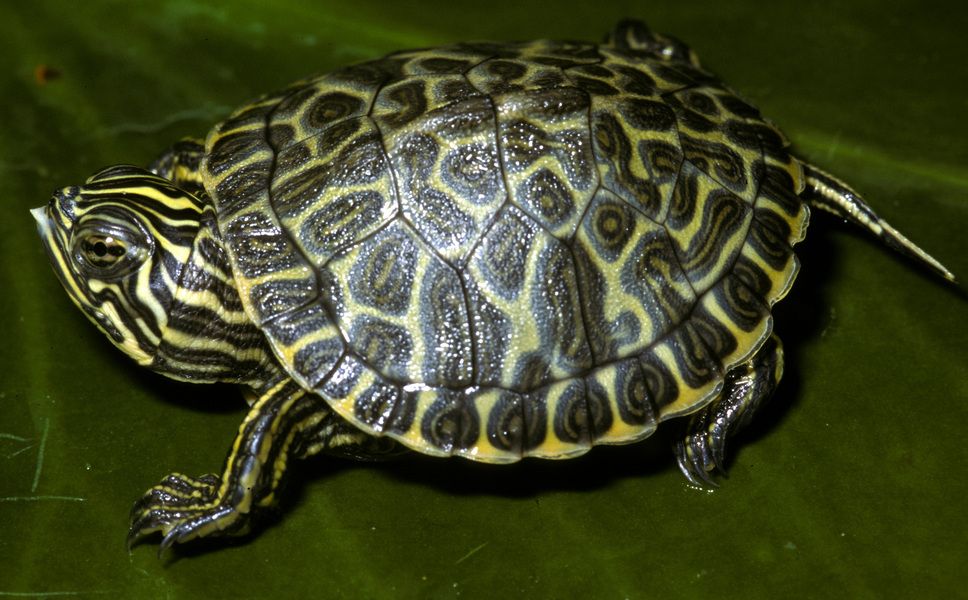
A C-shaped drawing is usually found on the first rib shield. From the corner of the mouth to the neck there is a drawing resembling a lying Y.
Florida red-bellied sliders (Pseudemys nelsoni)
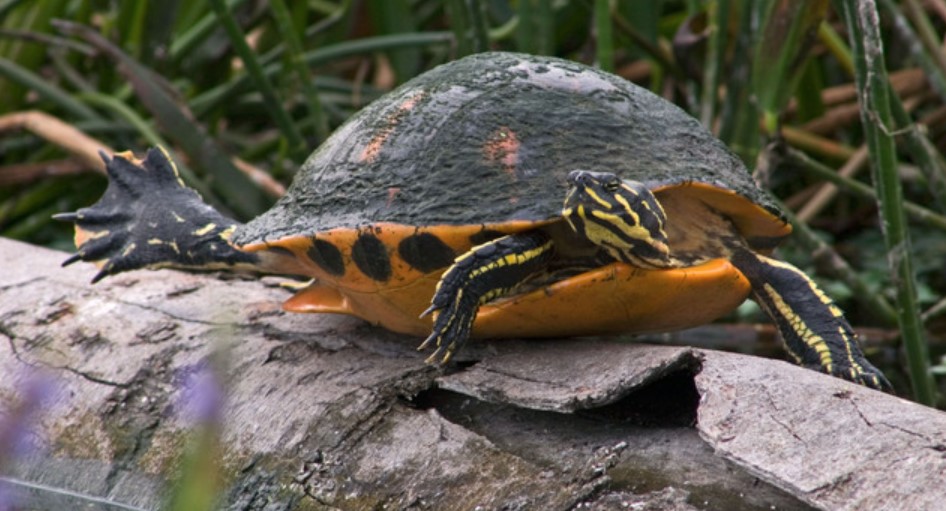
German names can sometimes be confusing. The belly shell of a Florida red-bellied slider turtle (Pseudemys nelsoni) is not really red. As a hatchling it is at most orange, but mostly yellow. In adult Florida red-bellied sliders, the belly is dark yellow. The belly shell of the northern red-bellied slider turtle (Pseudemys rubriventris) is really red.
On the rib shields there are broad stripes running outwards from the center of the carapace.
Peninsula Sliders (Pseudemys peninsularis)
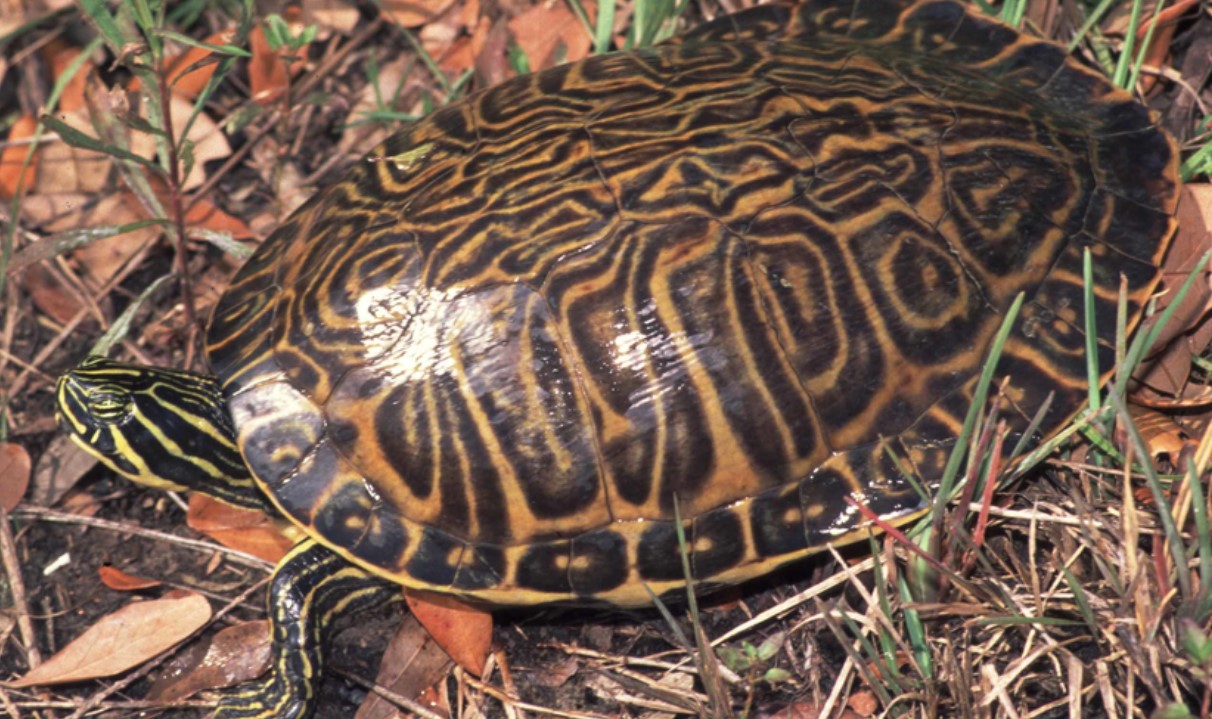
You can easily identify a Peninsula Slider by the hairpin markings on its head. This drawing element does not occur in any other turtle in such a rounded form.
Central American slider turtle (Trachemys venusta)
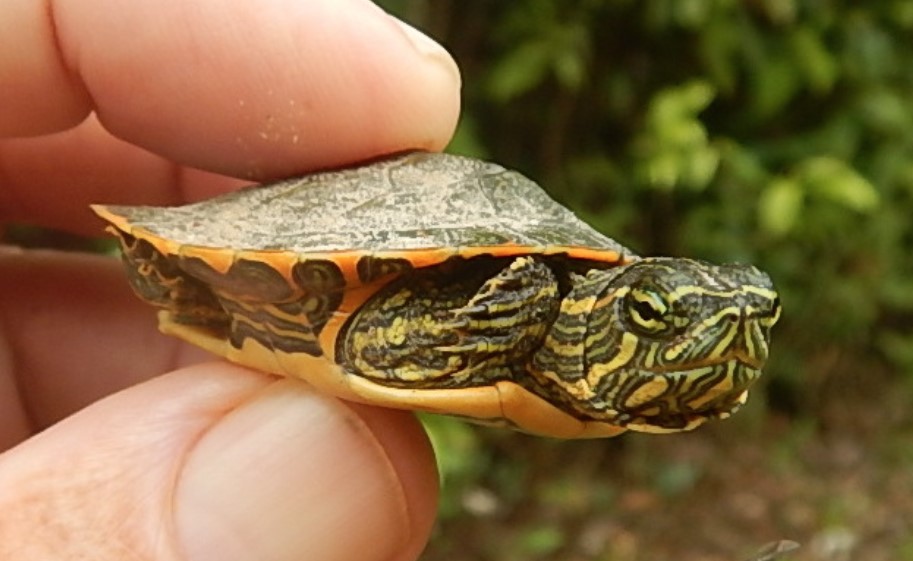
The Mesoamerican turtle (Trachemys venusta venusta) is sold in pet shops under fantasy names such as “Mexican ornamental turtle”. The babies are colorful and cute, but beware, these turtles grow very large and are not suitable for the pond.
Mute Turtles
Unfortunately, in the pet trade, humpback turtles are not offered separately according to species. Most often it is a mixture of Graptemys p. pseudogeographica, Graptemys p. kohnii and Graptemys ouachitensis. These humpback turtles can be distinguished by their head markings. In all three, the head markings consist of yellowish to ivory-colored lines against a dark gray background.
In addition to this characteristic head drawing, many people also look very closely at the eyes. But the eyes can be very variable in map turtles. One should rather rely on other characteristics. Of course, the eyes can give a hint, but you shouldn’t focus too much on it.
False Map Mute Turtles (Graptemys p. pseudogeographica)
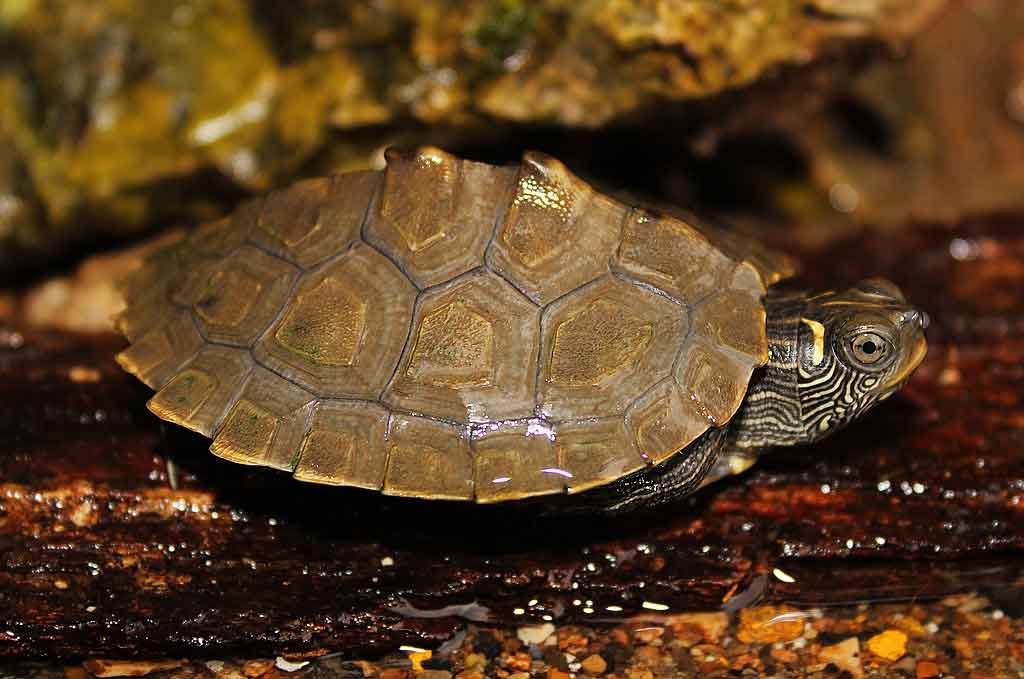
The false map turtle (Graptemys pseudogeographica pseudogeographica) has two slightly thicker stripes behind the eyes on the head, which come from the neck and bend to the side behind the eye. There are many dots under the eyes and around the mouth, but they are hardly thicker than the stripes. From the neck come a few stripes that reach to the eye. The iris of the eye is light brown to beige in color and is cut horizontally by a black line. This line in the eye can be more or less distinct, sometimes absent altogether. The beak is light to dark yellow. The lines on the legs and neck are slightly finer in this subspecies than in the other two.
Mississippi Mute Turtles (Graptemys p. kohnii)
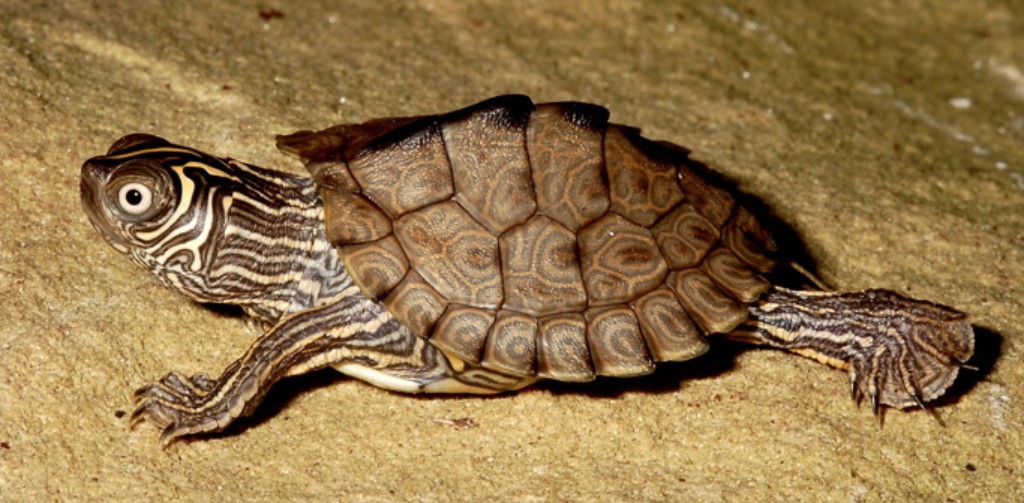
In the Mississippi mute turtle (Graptemys pseudogeographica kohnii), two prominent lines also come from the neck towards the eye and bend there, but then go much further and enclose the eye in a crescent or crescent shape. The circular markings on the head are relatively small, almost exclusively on the chin. The stripes from the neck don’t touch the eye because the crescent-shaped drawing is already around there. The iris is white and rarely has a dark line. The beak is colorless to whitish. The lines on the legs and neck are evenly thick, with lighter and darker lines.
Ouachita Mute Turtles (Graptemys ouachitensis)
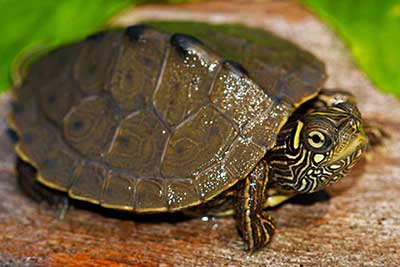
The Ouachita map turtle (Graptemys ouachitensis) has two yellow to orange spots, oval to square, on the head behind the eyes. These spots are outlined in dark. There are no lines extending from these spots towards the neck. There are circular markings under the eyes, under the corners of the mouth and on the chin under the tip of the beak, which are significantly larger than those of the first two map turtles. The diameter is significantly larger than the line thickness of the neck lines. Coming from the neck, one to three lines reach the eye. The iris is white and usually has a thin black line crossing the iris horizontally. The beak is colorless to whitish. In adult Ouachita map turtles, the lines are often reddish rather than yellowish, but not always. In the lines on the legs and neck, the light and dark lines are of different thicknesses.
Musk turtles
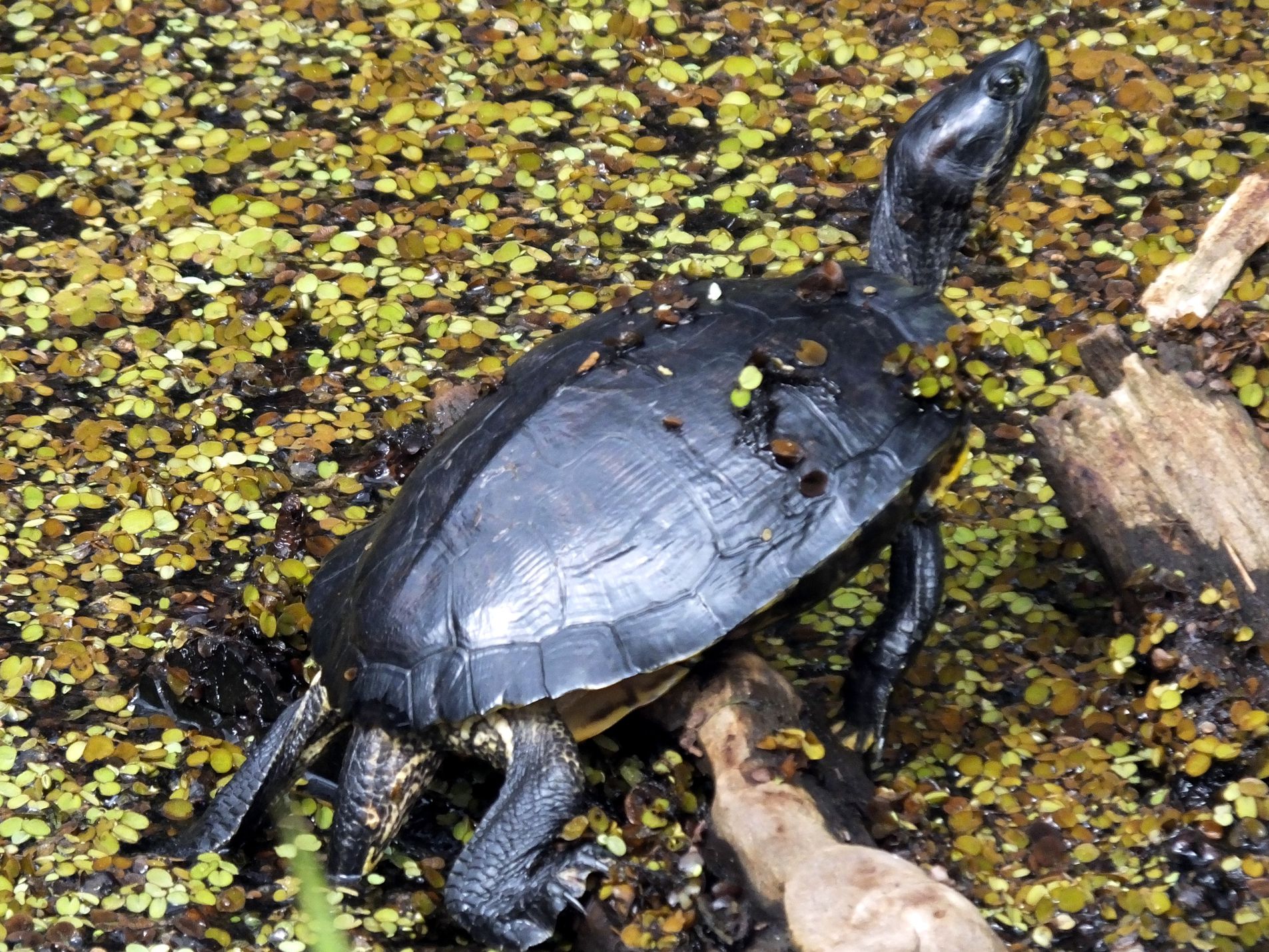
Musk turtles are usually sold in pet shops the size of a hard candy. Therefore, I will first show you the three most common musk turtle species as a baby.
The black turtle on the right is the common musk turtle (Sternotherus odoratus), which is the most common musk turtle. The second most popular musk turtle in the pet trade is the roofed musk turtle (Sternotherus carinatus), because it is lighter in color it is sometimes referred to as the “light-colored musk turtle”.
So how can you tell what kind of musk turtle you have at home? Step One: Do I have a tortoise from the Sternotherus minor group, i.e. minor, peltifer, intermedius and depressus?
If your turtle has a throat shield, then it’s probably not a Sternotherus carinatus, because the roofed musk turtle lacks the throat shield on the abdominal shell. You can recognize it like this: in the case of the roofed musk turtle, each shield on the abdominal shell is duplicated. The common musk turtle has a single additional shield in the center at the front of the head.
If there is a throat shield, then the next thing we look for is the barbels on the turtle’s chin. The common musk turtle has four barbels, two on the chin and two on the throat just behind.
If you find one or two throated shields, but only two barbels, then you have a musk turtle of the Sternotherus minor group. All have a relatively flat carapace with flared edges. The differences in appearance are the following:
Common musk turtles (Sternotherus odoratus)
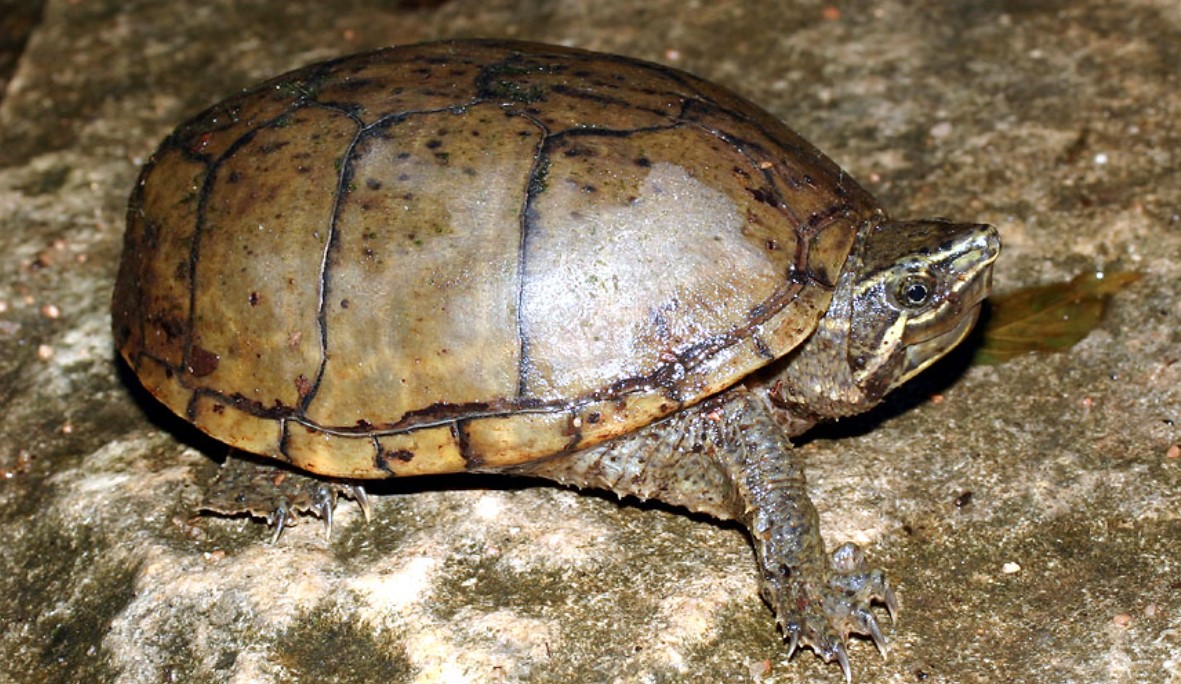
Greater Musk Turtles (Sternotherus carinatus)
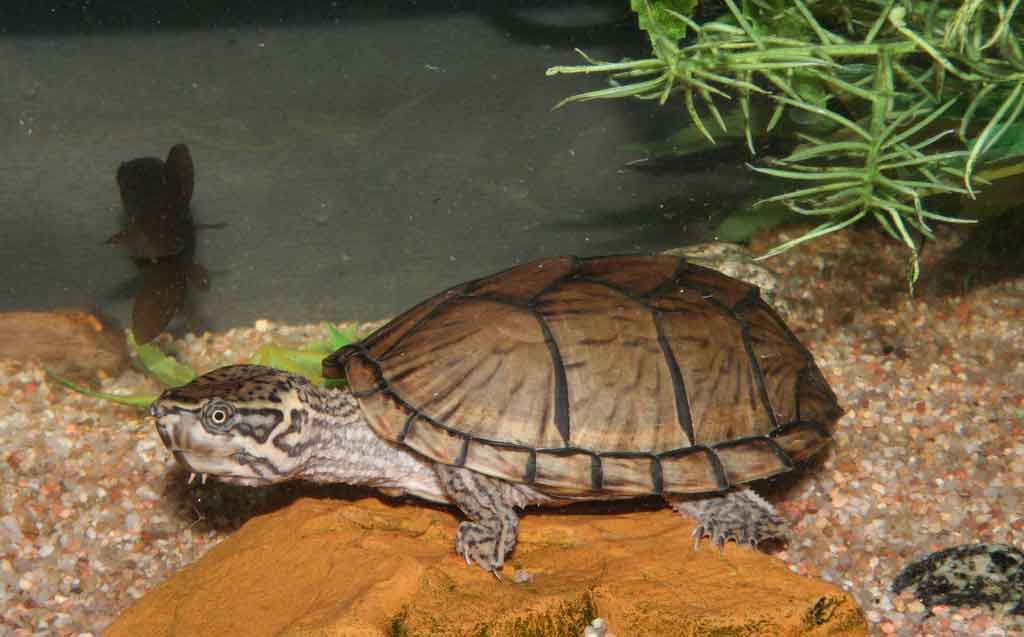
Pygmy Musk Turtles (Sternotherus minor minor)
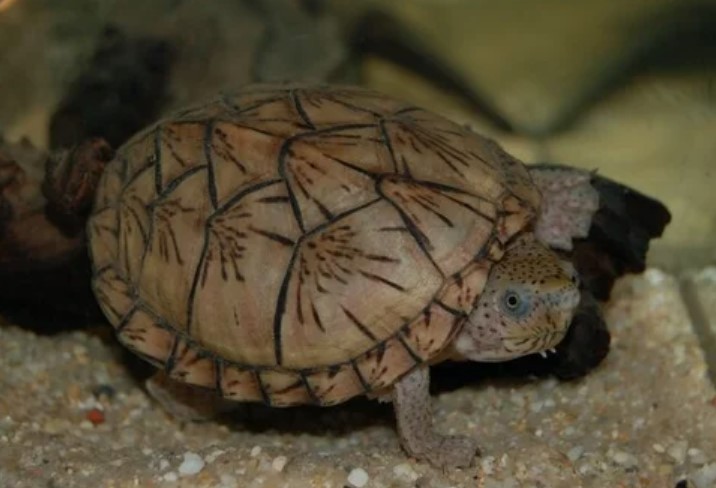
The pygmy musk turtle has a carapace with three indicated keels, one on top of the back and another in the middle on each side. In adult turtles, however, the quills are often no longer visible. On the head there are dark spots on a light background. There is a single throat shield. Two barbels on the neck (ie a pair).
Neck striped musk turtles (Sternotherus minor peltifer)
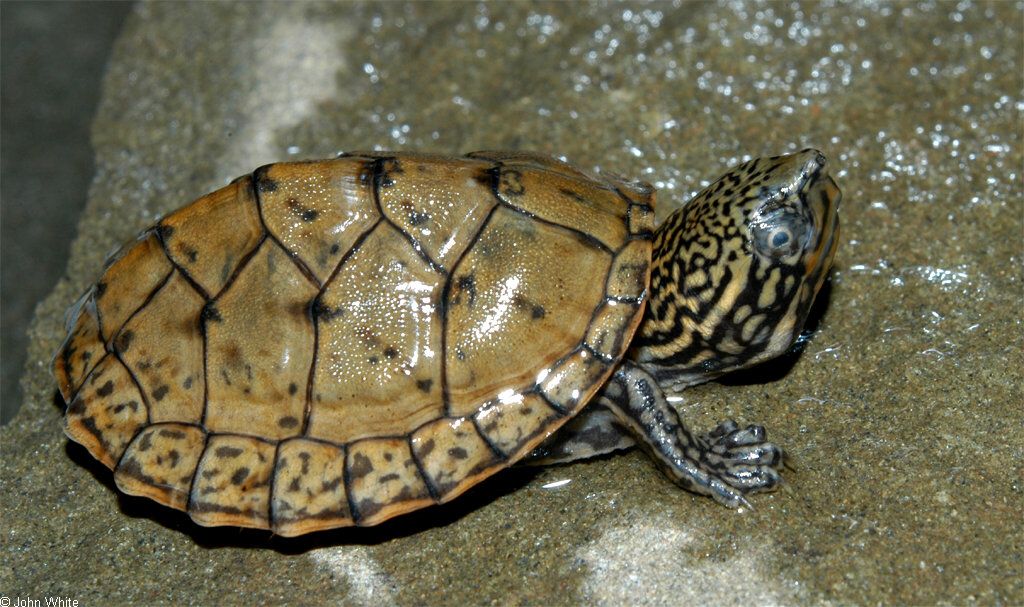
Hatchling musk turtle hatchlings have one keel but no side keels. There is a line-like pattern on the head and neck, but no dots. There are two throat shields and a few barbels.
Chinese three-keeled turtles (Mauremys reevesii)
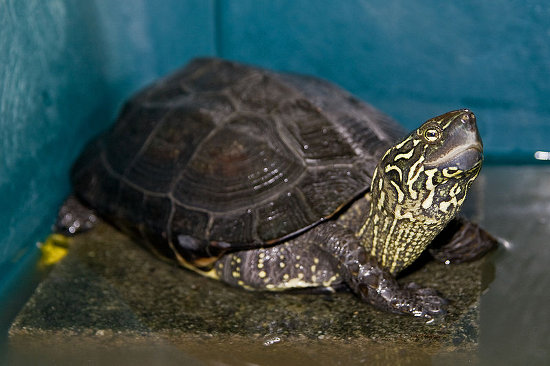
Chinese striped turtles (Mauremys sinensis)
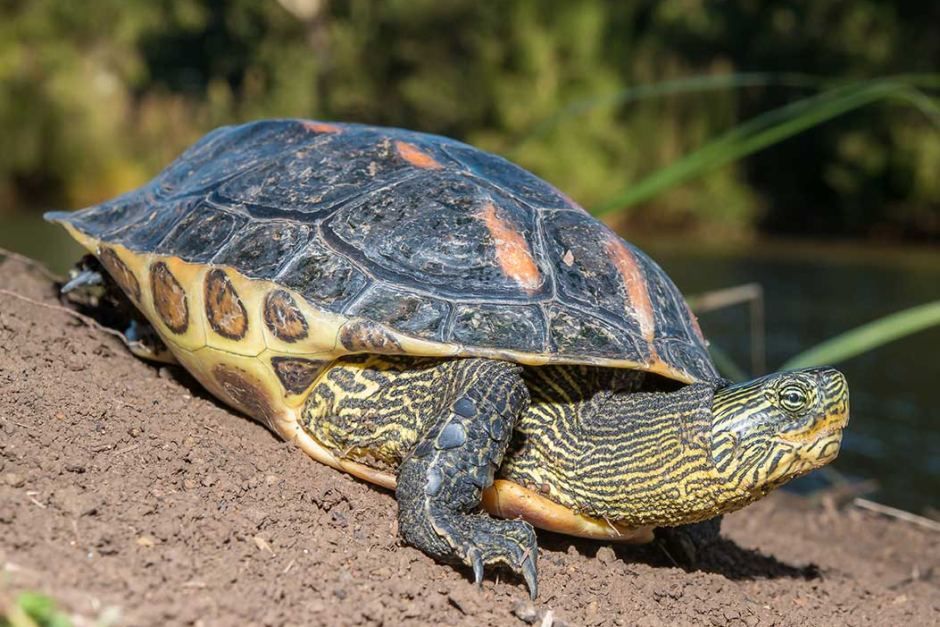
Red-bellied Shorthead Turtles (Emydura subglobosa)
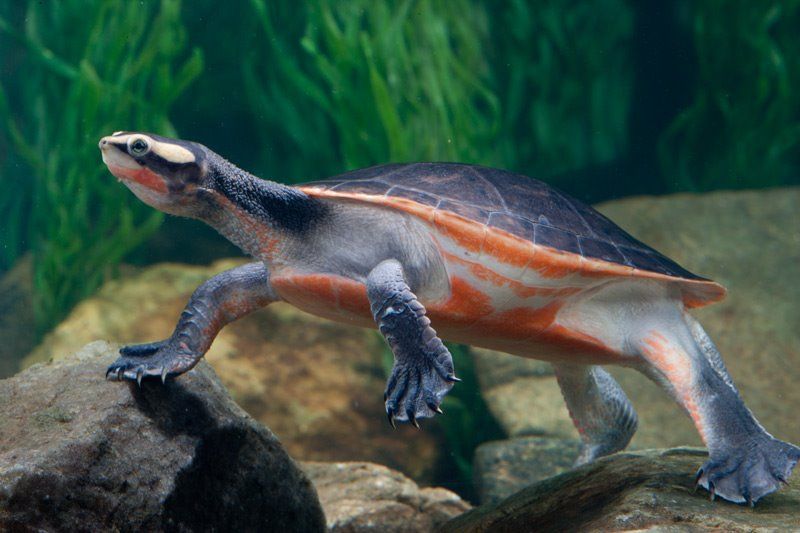
Ornamental turtles
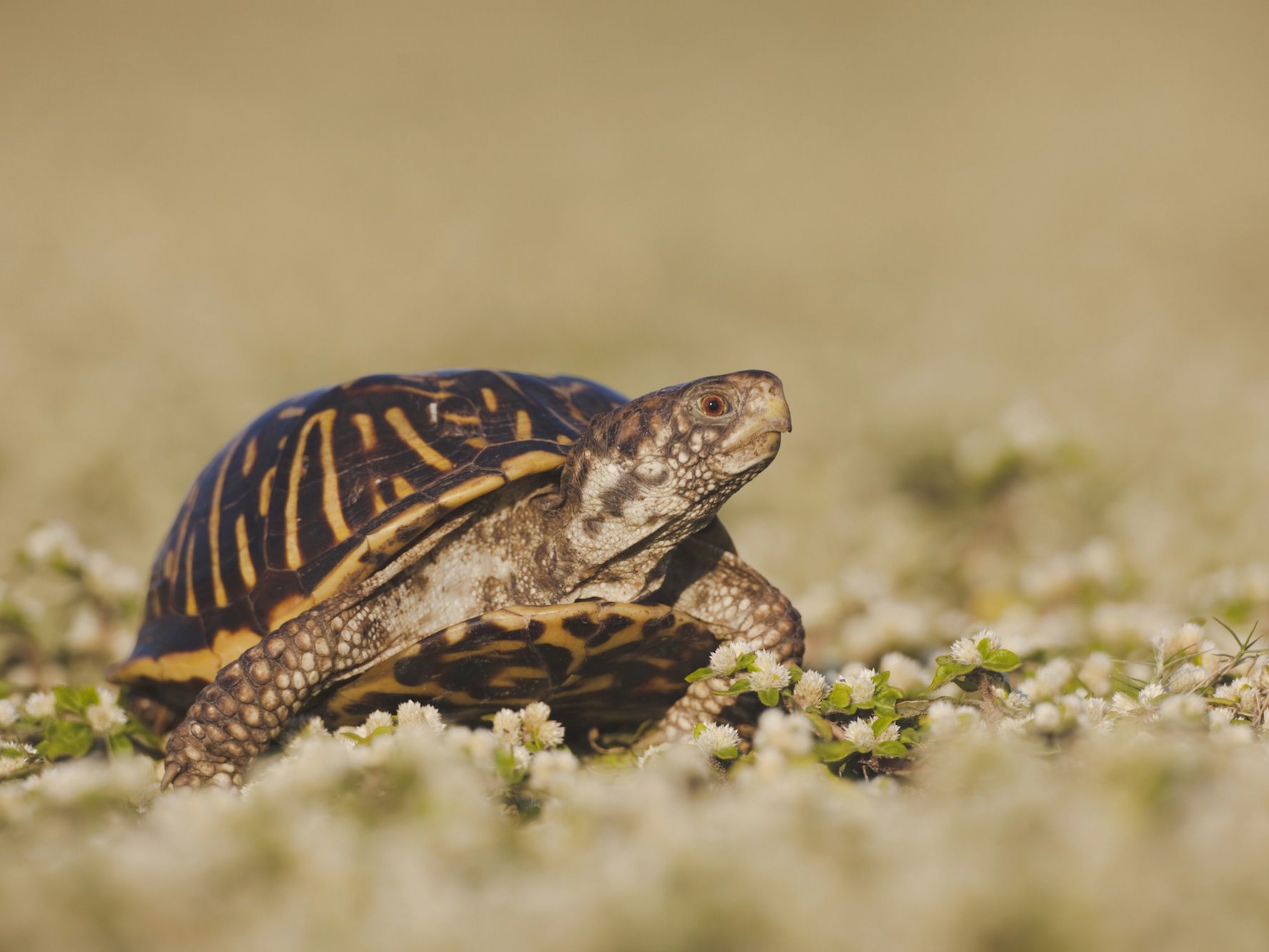
In contrast to slider turtles and humpback turtles, the rear edge of the shell of ornamental turtles is usually smooth and round, but slightly jagged in the former.
The identification key from OBST (1985) still applies, it begins with the drawing of the abdominal armor (plastron):
- Plastron (belly armor) monochrome yellowish without markings
The sutures between the anterior discus shields (these are the rib and vertebral shields) are marked by conspicuously bright wide stripes, the suture between the 2nd and 3rd vertebral shield runs almost straight into the suture between the 2nd and 3rd rib shields: Chrysemys picta picta
Marking of the sutures between the disk shields evenly and normally by narrow stripes, suture between the 2nd and 3rd vertebral shield clearly offset against the suture between the 2nd and 3rd rib shields, distinctive yellow or reddish dorsal stripe (especially in younger specimens): Chrysemys picta dorsal - Plastron with dark markings along the axis of symmetry
Plastron drawing only along the longitudinal seams of the plastron plates; Discus field (the rib and vertebral shields) of the carapace (back armor) in old age completely monochromatic and without markings: Chrysemys picta marginata
Plastron drawing with extensions along the transverse seams of the plastron shields, carapace with characteristic network drawing: Chrysemys picta bellii
Chrysemys picta picta, Eastern Painted Turtles
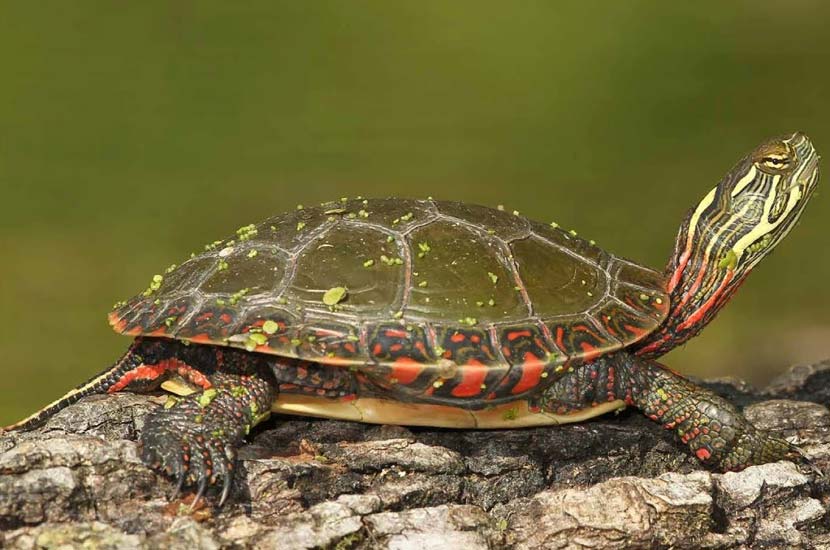
Chrysemys picta dorsalis, Striped Turtles (or Southern Turtles)
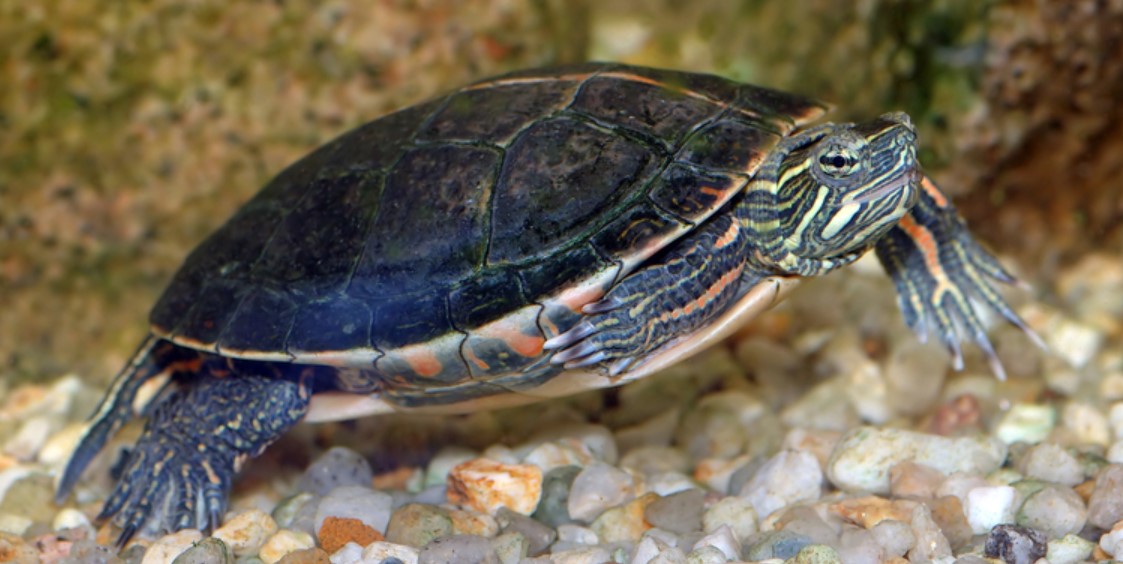
Chrysemys picta marginata, Mediterranean Turtles
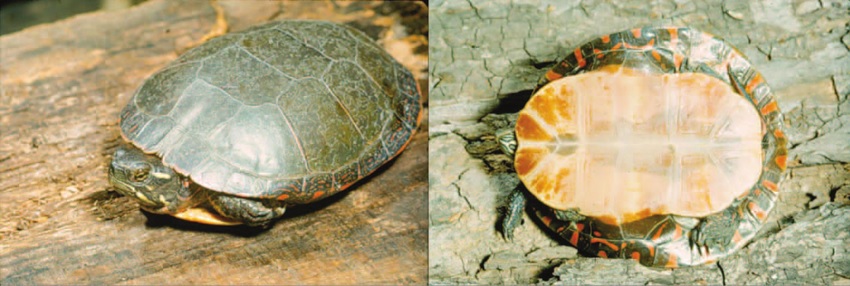
Chrysemys picta bellii, Indian Turtles (or Western Turtles)
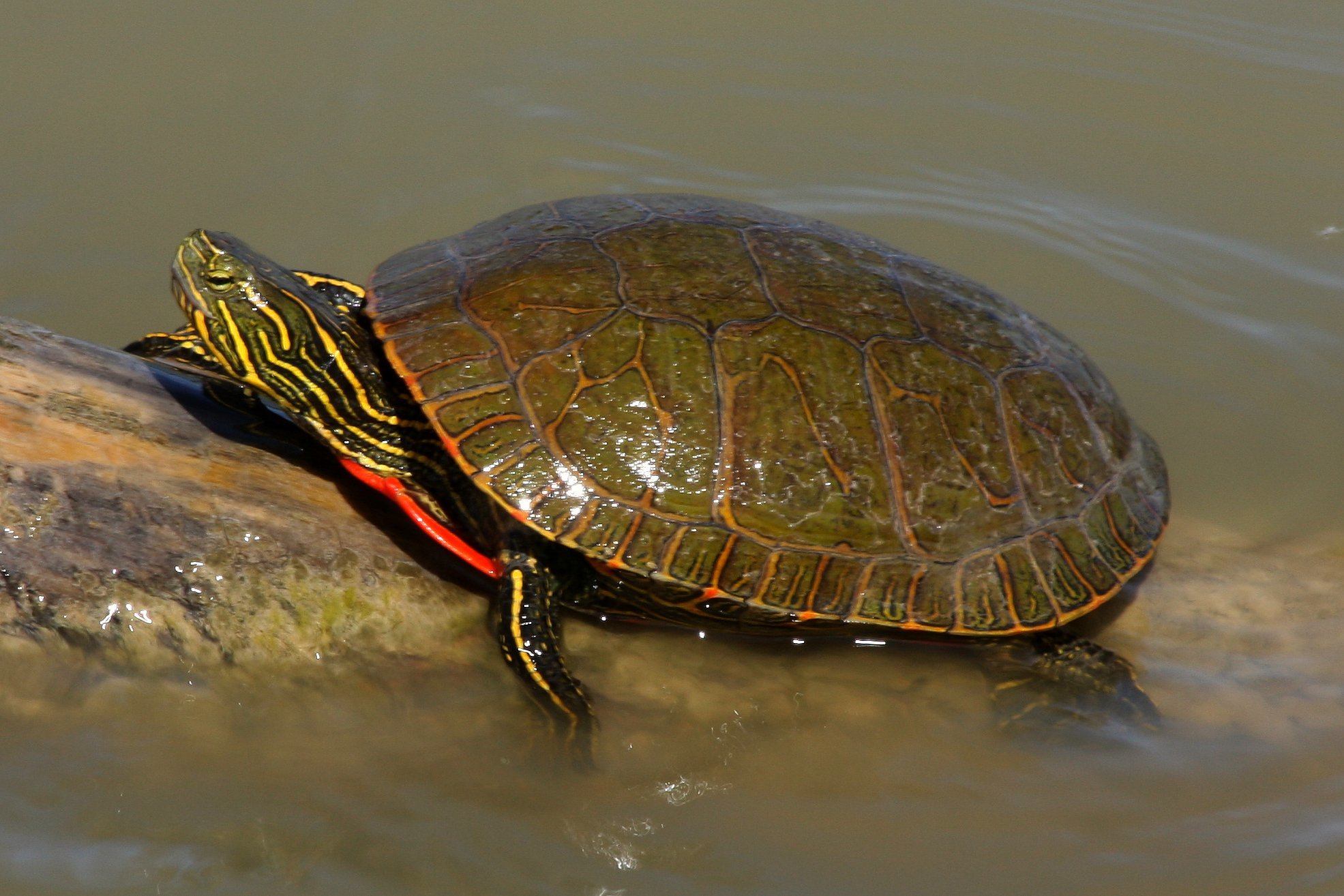
How many species of sea turtles are there?
There are several hundred species of turtles. The most popular species in terraristics include these species: European pond turtle (Emys orbicularis)
How do I know which turtle I have?
The main distinguishing feature between the sexes is the tail, which is significantly wider and longer in males than in females. In males, the cloaca is located significantly further caudally (towards the tail) than in females.
Which sea turtle is best?
- Striped Turtles, Chrysemys picta dorsalis.
- Painted Turtles, Chrysemys picta.
- Letter-eared turtles, Trachemys scripta.
- Common musk turtles, Sternotherus odoratus.
- Neck-striped musk turtles, Sternotherus minor peltifer.
What is the smallest sea turtle?
The smallest sea turtle of all is Vogt’s golden-nosed turtle (Kinosternon vogti). This turtle reaches a maximum shell length of 10.2 cm. It was only scientifically described in 2018. In German it is sometimes also called Vallarta mud turtle.
How much does a baby sea turtle cost?
Tortoise. An ornamental turtle hatchling (Chrysemys picta subspecies) can be obtained from the breeder for $80 – $120. Hatchlings of black-button turtles (Graptemys nigrinoda nigrinoda) are slightly more expensive. Other types of sawback are even more expensive ($300-$500).
How big does an aquarium have to be for 2 turtles?
In general, an aquarium is required for aquatic turtles that has a length of five times the shell length of the largest turtle. The width of the aquarium should correspond to three times the shell length.
Can sea turtles hear?
How well can turtles hear? Turtles have very poor hearing because their “ears” are under their skin. Hearing is limited to dull tones.


